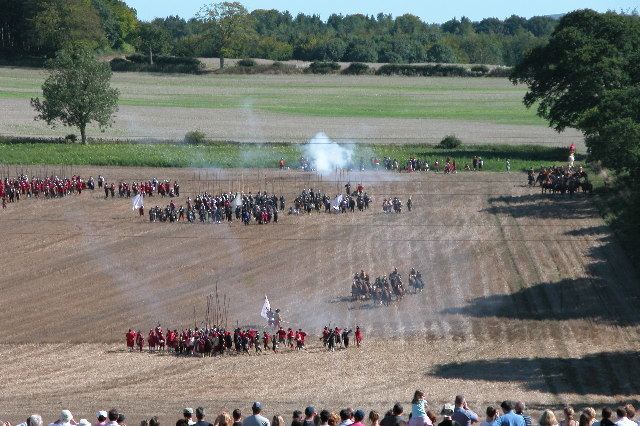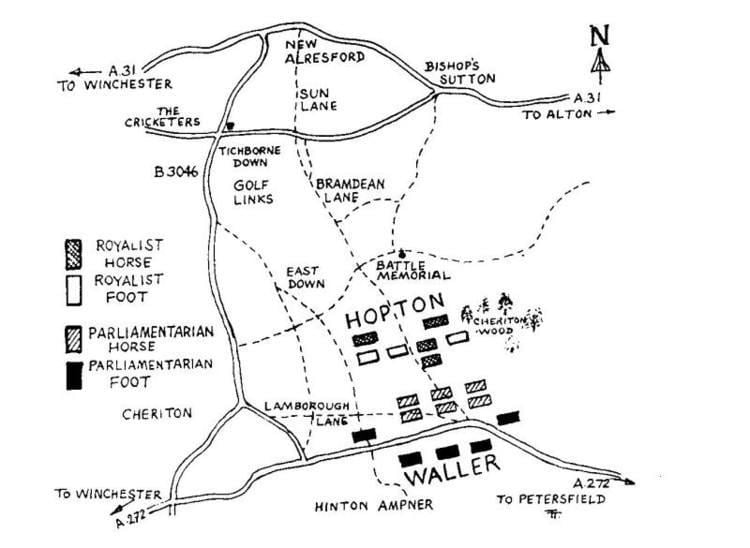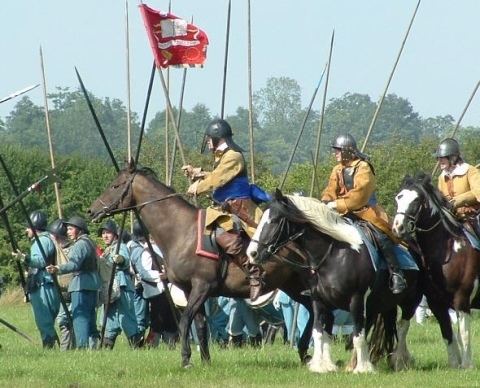60 killed or wounded 300 killed or wounded Result Parliamentarian victory | Date 29 March 1644 | |
 | ||
3,500 cavalry6,500 infantry 2,500 cavalry3,500 infantry Similar Battle of Cropredy Bridge, Battle of Langport, Battle of Stow‑on‑the‑Wold, Battle of Winceby, Battle of Braddock Down | ||
Five minute battles 1 the battle of cheriton english civil war 1644
The Battle of Cheriton was an important Parliamentarian victory in the English Civil War. It took place on 29 March 1644 and resulted in the defeat of a Royalist army, which threw King Charles I onto the defensive for the remainder of the year.
Contents
- Five minute battles 1 the battle of cheriton english civil war 1644
- The battle of cheriton
- Campaign
- Battle
- Results
- References

The battle of cheriton
Campaign
Early in 1644, a Royalist army under Lord Hopton faced a Parliamentarian army under Sir William Waller in the southern counties of England. After some reverses during the previous December, culminating in the Battle of Alton, Hopton had withdrawn to Winchester to regroup and recruit. He was joined here by a detachment from the King's main "Oxford Army" under the Earl of Forth, who unwillingly took command of the army. They resumed their advance eastward early in March.

Waller's army of the "Southern Association" had also been reinforced by detachments from the main Parliamentarian army under the Earl of Essex and the London Trained Bands, and was advancing westward from his winter quarters near Arundel. Forth and Hopton determined to seize New Alresford, thus placing themselves between Waller and London. They forestalled the Parliamentarian cavalry under Sir William Balfour, and occupied the town late on 27 March.

On 28 March, the Royalists advanced cautiously south from Alresford. An advanced guard under Sir George Lisle occupied an outpost position near Cheriton as night fell, and reported that the Parliamentarians were retreating.
Battle
The Parliamentarians had been outmanoeuvred up to this point, and had indeed begun to retreat, but overnight Waller changed his mind and ordered an advance. As dawn broke, the City of London Brigade occupied Cheriton Wood. Hopton had moved to Lisle's outpost, and realised that it would have to be hastily withdrawn. The Royalists fell back to a ridge north of the wood, as Waller advanced.

Hopton determined to recapture Cheriton Wood, and sent forward 1,000 "commanded" musketeers under a Colonel Appleyard, supported by a battery of guns. There was some hot fighting, but the Parliamentarians abandoned the wood. Forth and Hopton intended to stand on the defensive at this point, but an impetuous infantry commander, Sir Henry Bard, launched his regiment of foot against the Parliamentarian left wing horse. Bard's regiment was overwhelmed and destroyed by a charge from Sir Arthur Hesilrige's regiment of horse. (This was not his famed Cuirassier regiment which had been destroyed at Roundway Down some 8 months earlier, instead the regiment had been rebuilt as 'regular' cavalry since September 1643). The Royalist cavalry on the right wing tried to support him, but were forced to make disjointed attacks along narrow lanes and were defeated in turn.
Hopton sent the Royalist horse from the left wing under Sir Edward Stawell to make a better prepared attack, but they were also defeated. Haselrig's regiment now attacked the Royalist foot moving up in support, and drove them back. The Parliamentarians also attacked the Royalist left, which had been denuded of its horse, and regained Cheriton Wood.
The Royalists fell back to their ridge, but Hopton and Forth realised they could not withstand a deliberate Parliamentarian attack the next day. As evening fell, the Royalists retreated to Basing House, having lost many brave cavaliers including their Lieutenant General of Horse: Lord John Stuart, Major General of Horse: Sir John Smith, Sir Edward Stowell and Henry Sandys of the Vyne, grandson of William, Fourth Lord Sandys. In addition to these casualties, Raoul Fleury (c/o of the Queens Regiment) and the aforementioned Sir Henry Bard were both badly wounded.
Results
The defeat of Forth's and Hopton's army left the King's plans of a thrust into Sussex and Kent in tatters. It also allowed the Parliamentarian armies of Essex and Waller to concentrate against the King at Oxford. The king merged the remnants of Hopton's army into his own at the review held at Aldbourne during April 1644. The infantry was formed into a single brigade under Sir Bernard Astley while most of the cavalry was formed into Sir Humphrey Bennett's brigade, with other remnants joining Lord Wilmot's brigade.
Although Charles was able to partly restore the situation later in 1644 by gaining victories at Cropredy Bridge and Lostwithiel, the Royalists could never again resume the offensive in the south of England. The prominent Royalist statesman, the Earl of Clarendon, considered the battle a disaster.
